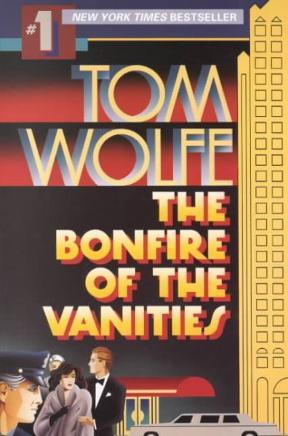The world of literature often offers a captivating lens through which we can examine society’s dynamics, and few novels have accomplished this with as much vigor and insight as “The Bonfire of the Vanities” by Tom Wolfe. Published in 1987, this audacious satire delves into the intricacies of class, race, and ambition in 1980s New York City, spinning a narrative that is both entertaining and thought-provoking. The title itself evokes imagery of a pyre fueled by the collective anxieties and desires of a city teetering on the brink of chaos. Wolfe’s genius lies not only in his storytelling prowess but also in his ability to shift our perspectives, urging us to reflect on our own lives and the societal constructs that govern them.
As we embark on this literary exploration, let’s firmly grasp the premise of the novel. The story revolves around Sherman McCoy, a Wall Street bond trader, whose life seems enviable on the surface. With his ostentatious wealth, suburban domicile, and a penchant for the finer things, McCoy epitomizes the American Dream. Yet, this facade crumbles when he becomes embroiled in a hit-and-run scandal in the Bronx, a neighborhood marked by its struggles. This event catalyzes a series of spiraling consequences that bring to light the collective moral decay festering beneath the vibrant surface of New York.
The juxtaposition between the elitist world of McCoy and the gritty reality of the Bronx is a masterstroke of Wolfe’s narrative design. He doesn’t merely present a tale of one man’s downfall; instead, he sets the stage for a broader examination of societal fractures. The characters in the novel, much like the city itself, serve as reflections of various archetypes: the ambitious politician, the opportunistic journalist, and the disenfranchised populace, each with their own motives and desires. This meticulous character construction invites readers to analyze the multifaceted nature of identity and ambition.
What makes “The Bonfire of the Vanities” an astonishing read is Wolfe’s commitment to authenticity in character portrayal. He employs a distinctive writing style, interweaving intricate descriptions with dialogue that captures the vernacular of the time, breathing life into each scene. The prose oscillates between the humorous and the satirical, creating an engaging rhythm that allows for both laughter and introspection. This is not merely a story; it is an immersive experience, compelling us to inhabit the minds of its characters, scrutinizing their moral dilemmas and ethical quandaries.
Moreover, Wolfe’s keen observatory skills extend to the societal structures that dictate behaviors and interactions within the city. He deftly critiques the socio-economic stratifications that influence everything, from the media’s portrayal of events to the public’s response to crime. The media, in particular, emerges as a character in its own right, an omniscient force that shapes narratives, often blurring the lines between fact and sensationalism. This commentary on the role of the Fourth Estate resonates especially today, as we grapple with the influence of media on public perception and discourse.
Yet, at the core of this sprawling narrative is the intrinsic human desire for connection and understanding. Amid the chaos, there lies a yearning for empathy, a longing to transcend societal barriers. Wolfe’s characters, though flawed, are painted with strokes of humanity that elicit sympathy. As readers, we are challenged to empathize with McCoy, a man who finds his world unraveling, and yet, he remains an emblem of a broader struggle—caught in the throes of capitalism, ambition, and societal expectations.
The book’s climax is a tense and climactic alignment of events that feels almost Shakespearean in its unfolding. McCoy’s ultimate confrontation with his reality brings forth revelations that compel readers to reflect on their own lives. It serves as a reminder that the flames of ambition, if left unchecked, can quickly become a conflagration, consuming all in their path. Wolfe does not provide easy answers; instead, he leaves us with a lingering sense of disquiet, a prompt to ponder our own roles within a society rife with contradictions.
To delve into “The Bonfire of the Vanities” is to embark on a journey of catharsis and contemplation. It leads us through the bustling streets of New York, into the luxurious penthouses of Wall Street, and down to the underbelly of the Bronx. The odyssey through these varying landscapes not only piques curiosity but also challenges perceptions, showcasing Wolfe’s extraordinary ability to encapsulate the zeitgeist of an era that still resonates today.
Ultimately, “The Bonfire of the Vanities” beckons readers to engage critically with the societal currents that shape our lives. In a world where the lines between ethics and ambition often blur, Wolfe’s narrative serves as a compelling reminder of the delicate balance we must all navigate. It encourages a shift in perspective, urging us to consider not just the triumphs but also the trials that define us. In short, reading this novel is not merely an intellectual exercise, but a profound exploration of what it means to be human in a complex, often contradictory world.
